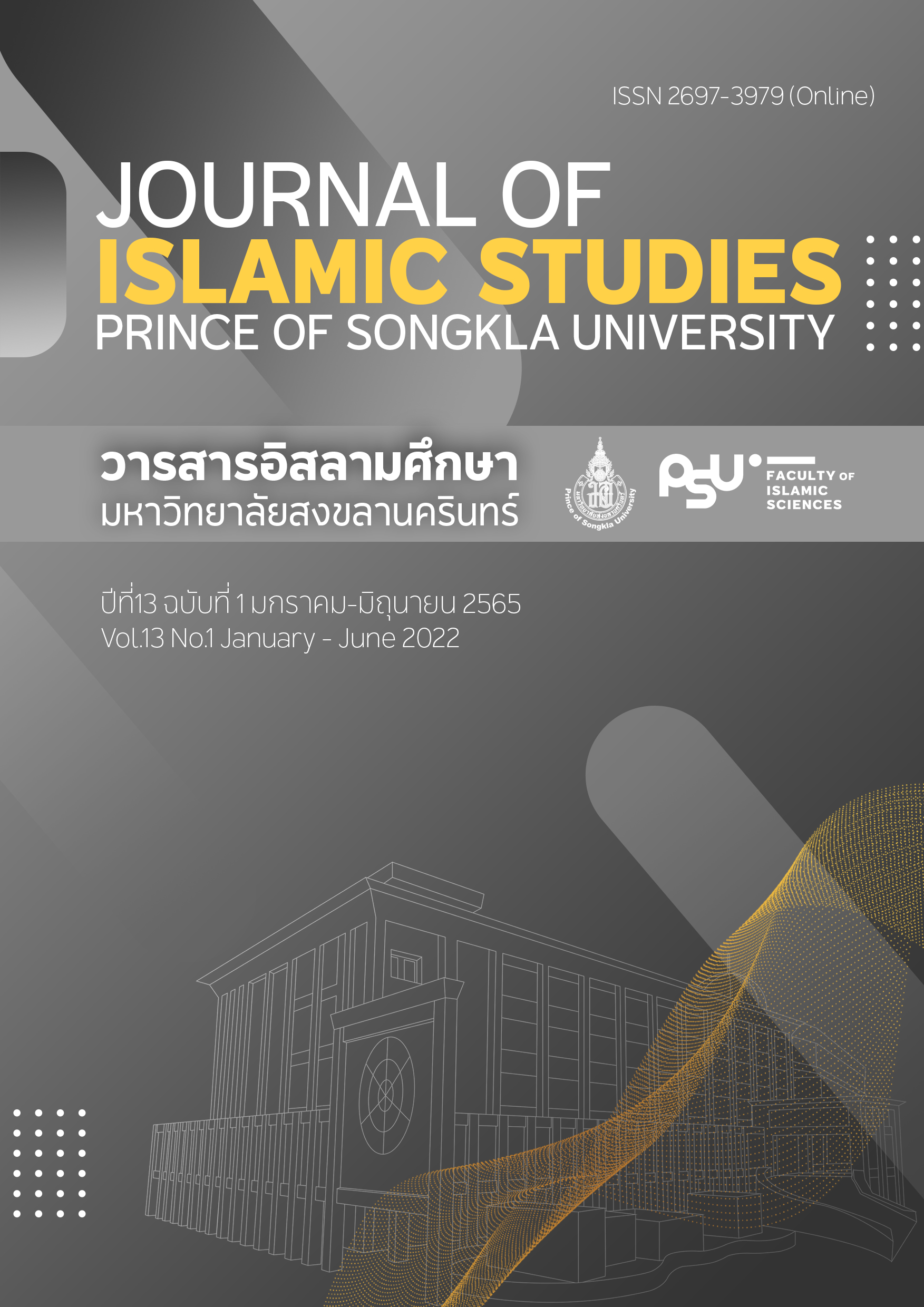Realism in International Relations: An Islamic Critique
คำสำคัญ:
Realism, International Relations, Islamบทคัดย่อ
Objective The study aims to shed light on similarities and differences between realism and Islam in terms of their epistemology, methodology, and relevant concepts such as human nature, state in the anarchic international system, and power.
Methodology This study utilizes a qualitative research approach. Data are mainly taken from relevant literature and books. The analysis is conducted by comparing realism and Islam on the related epistemological and methodological constructs.
Research Finding This research argues that Islam and realism fundamentally differ on epistemological and methodological aspects. Realism is posited in line with the positivistic approach that rejects value as part of scientific inquiry. However, it has been argued by Muslim scholars that they are not value-free. Islam, on the contrary, accepts value as an essential part of knowledge and science taken from revelation sources (the Qur’an and Sunnah) and gives equal importance to rationality as a complementary method to comprehend the revelation and vice versa.
Application The study shows some relevance between realism and Islam. The study is useful for general readers and researchers who are interested in Islamization of social science in general and international relations in particular. The result demonstrates a clearer understanding of their similarities and differences.
เอกสารอ้างอิง
Sulayman, A., & Hamid, A. (1993). Towards an Islamic Theory of International Relations: New Directions for Methodology and Thought. International Islamic Publishing House.
Al-Alwani, T. J. (1995). The Islamization of Knowledge: Yesterday and Today. American Journal of Islam and Society, 12(1), 81–101. Retrieved from https://doi.org/10.35632/ajis.v12i1.2390
Al-Attas, S. M. N. (1978). Islam and Secularism. International Institute of Islamic Thought and Civilization.
Al-Faruqi, I. R. (1982). Islamization of Knowledge: General Principles and Work Plan. International Institute of Islamic Thought.
Al-Qur’an (Sahih International, Trans.). (2021). The Qur’an Online. Retrieved from https://legacy.quran.com/
Bryman, A. (2012). Social Research Methods. Oxford University Press.
Donnelly, J. (2005). Realism. In Burchill, Scott (Eds.), Theories of International Relations. (pp. 29-54). Palgrave Macmillan.
Elman, C. (2007). Realism. In Griffiths, Martin (Ed.), International Relations Theory for the Twenty-First Century: An Introduction. (pp. 11-20). Routledge.
Hobbes, T. (1651). Leviathan [E-book]. Green Dragon in St. Pauls Church-yard.
Lebow, N. R. (2011). Philosophy and International Relations. (Review Article). International Affairs, 87(5), 1219-1228.
Linklater, A. (2007). Critical Theory. In Griffiths, Martin (Ed.), International Relations Theory for the Twenty-First Century: An Introduction. (pp. 47-59). Routledge.
Morgenthau, H. J. (2005). Politics Among Nations: The Struggle for Power and Peace. (7th ed). McGraw-Hill.
Moten, A. R. (1996). Political Science: An Islamic Perspective. Macmillan Press Ltd.
Neuman, W. L. (2011). Social Research Methods: Qualitative and Quantitative Approaches. Allyn & Bacon Publishing.
Spirtas, M. (1996). A house divided: Tragedy and evil in realist theory. Security Studies, 5(3), 385–423. Retrieved from https://doi:10. 1080/09636419608429284
ดาวน์โหลด
เผยแพร่แล้ว
รูปแบบการอ้างอิง
ฉบับ
ประเภทบทความ
สัญญาอนุญาต
ลิขสิทธิ์ (c) 2022 วารสารอิสลามศึกษา มหาวิทยาลัยสงขลานครินทร์

อนุญาตภายใต้เงื่อนไข Creative Commons Attribution-NonCommercial-NoDerivatives 4.0 International License.
บทความทุกเรื่อง ที่ได้รับการตีพิมพ์ในวารสารอิสลามศึกษาเป็นแนวคิดของผู้เขียน มิใช่เป็นความคิดเห็นคณะผู้จัดทำและมิใช่ความรับผิดชอบของคณะวิทยาการอิสลาม กองบรรณาธิการไม่สงวนสิทธิ์การคัดลอก แต่ให้มีการอ้างอิงแสดงที่มา






